Welcome back, Market Shakers!
It never ceases to amaze me how much weight the word “sustainability” has to carry around. It is an all-encompassing term that covers all manner of eco-friendly habits, including chowing down on some alt protein (see Part 1).
Sustainability was one of the main themes at AFTEA (the other two being Innovation and Safety), and that is the focus of this piece. Sustainability came in as much diversity as the attendees at the expo, spanning new agricultural methods, waste management, green packaging, and even something out of the blue (a.k.a. seafood).
Let’s dive straight in.
Vertical farming
Controlled environment agriculture (CEA) – fancy speak for vertical farming – was a bit of a buzz word this year. Companies big and small were showing off their wares to grow your greens indoors away from all those unpredictable outdoorsy issues. I have to say, the vibe was kind of dystopian clinical but nevertheless very cool.
There is quite a bit riding on CEA as a way to help with food security but also to remove some of the dependence on our natural resources, i.e., mainly land and water. The global CEA market is expected to grow 5X between 2022 and 2032, thanks to the rising demand for fresh produce all year round, especially in urban centers. That pesky seasonality is fast becoming a thing of a luddite past.
Siemens had a strong presence at the event, being one of the more established players in this space and bringing their manufacturing and digitization might into play. But there were several smaller contenders as well, each bringing something different to the table.

GRAIN International and Arianetech combine vertical farming, high-tech monitoring systems (drones), and some very cool biotech to go beyond just your standard leafy greens. According to the GRAIN International, vertical farming at this stage is not enough to feed our growing population; instead, it will need to complement traditional farming practices. While anything – including cereal grains could be grown in this format – it is probably not worth the effort.

However, they said that doesn’t mean that you can’t add value to the crops grown in this manner, which would ultimately help farmers make a more suitable livelihood. The company has been working on coffee crops that could be grown in a controlled environment as well as creating orchids that are fragrant. Most orchids do not have any fragrance.

Did I mention there was a drone monitoring the plants? See if you can spot it hovering here…

Siemens and GRAIN International focus on larger scale production, but CEA could very well be practiced inside homes as well. Aerospring Hydroponics offers a range of compact units for people who may want to grow their own vegetables but don’t have garden space. They have DIY units that can be maintained through automated irrigation and lighting.
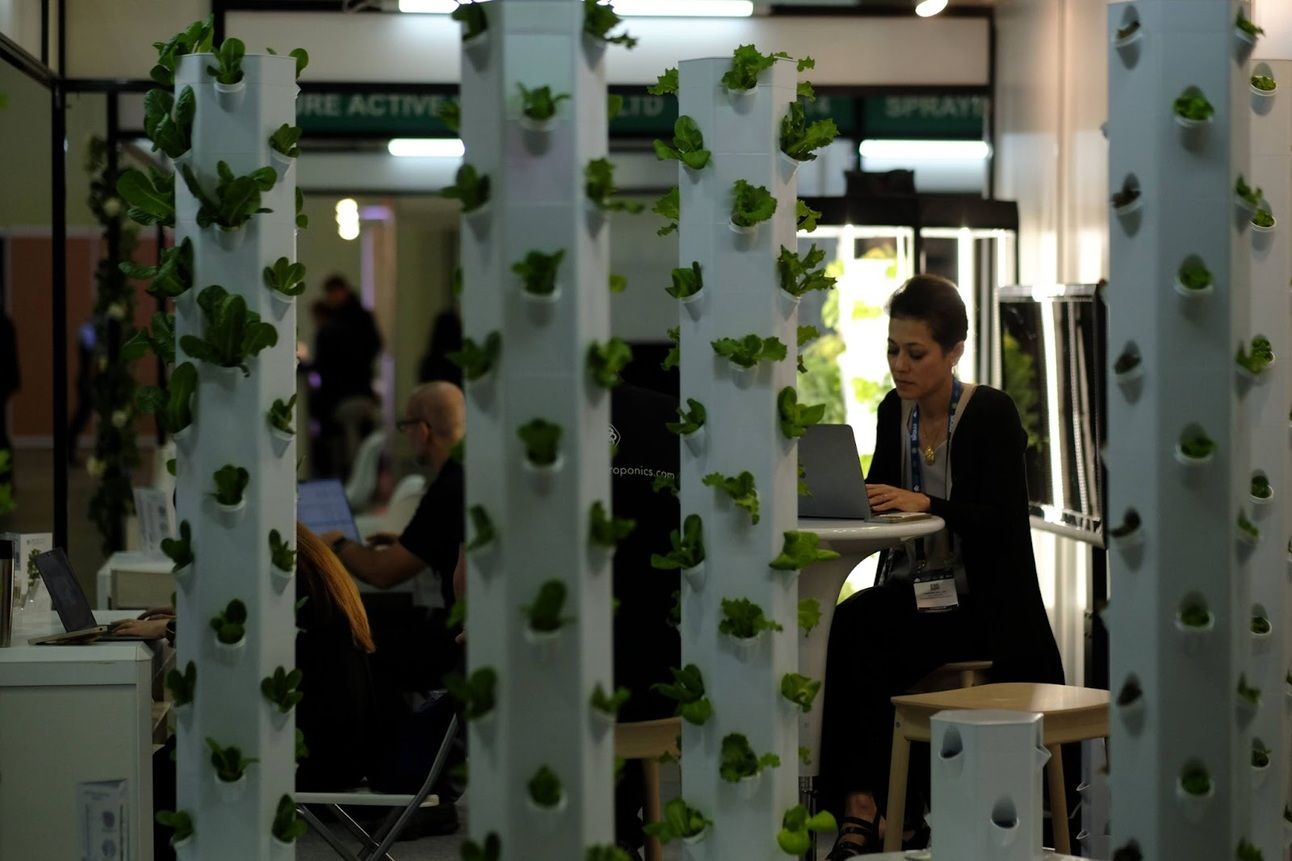
Aerospring Hydroponics
Like what you’re reading?
Upcycling
Several examples of upcycling popped up, opening up a fascinating view into possibilities.
Easily one of the most mind blowing products I’ve encountered was from The Kawa Project, a start-up that is making a cocoa alternative without the cocoa. And get this: their raw material is spent coffee grounds.
The US-based company sources this used up coffee grounds from industrial brewers and uses a proprietary refining process to create a powder that is milled and ready to be used as a cocoa substitute. Kawa was handing out samples of a chocolate spread alternative using their ingredient. Gotta say, for coffee refuse, it was pretty darn chocolatey.
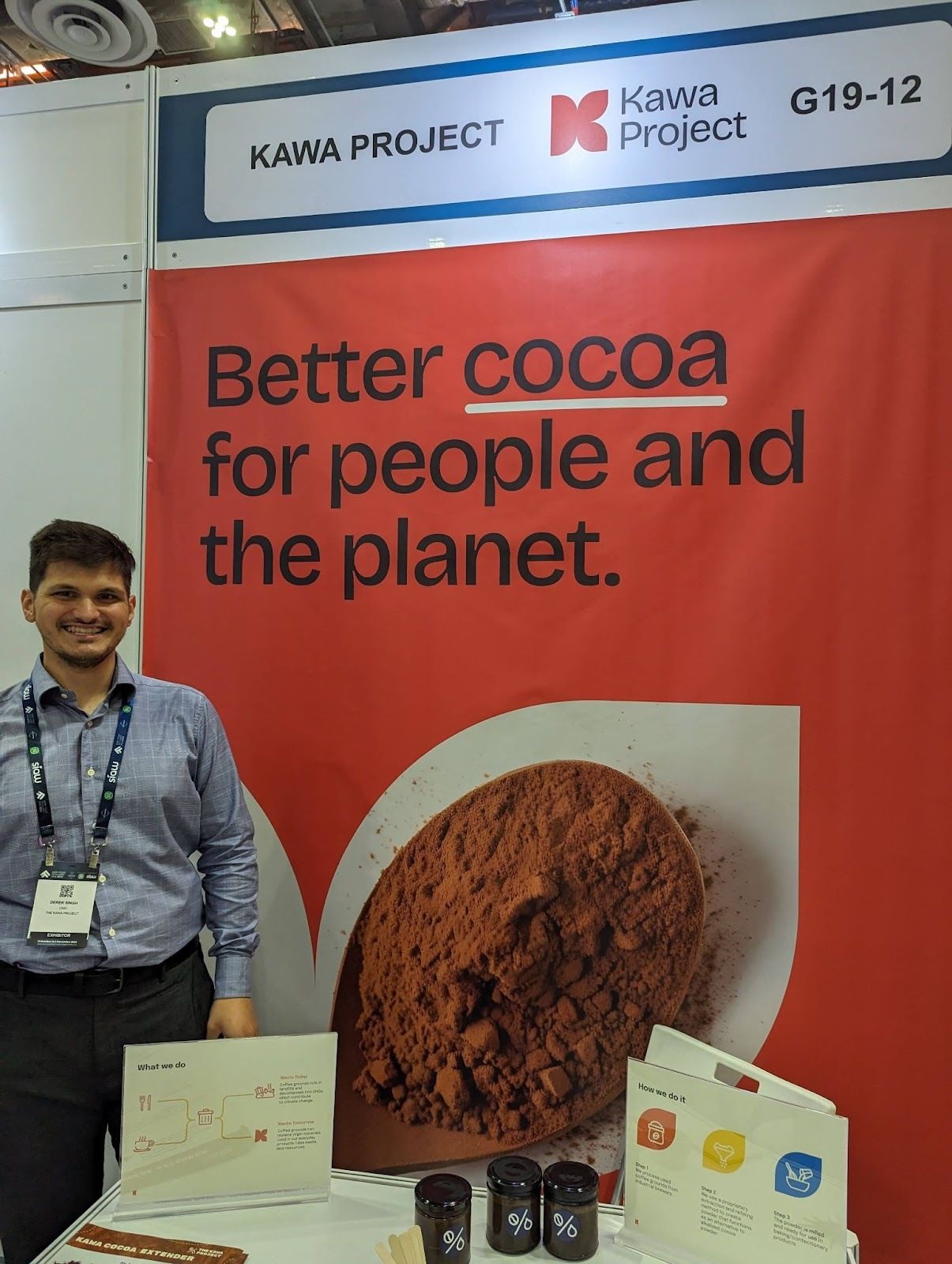
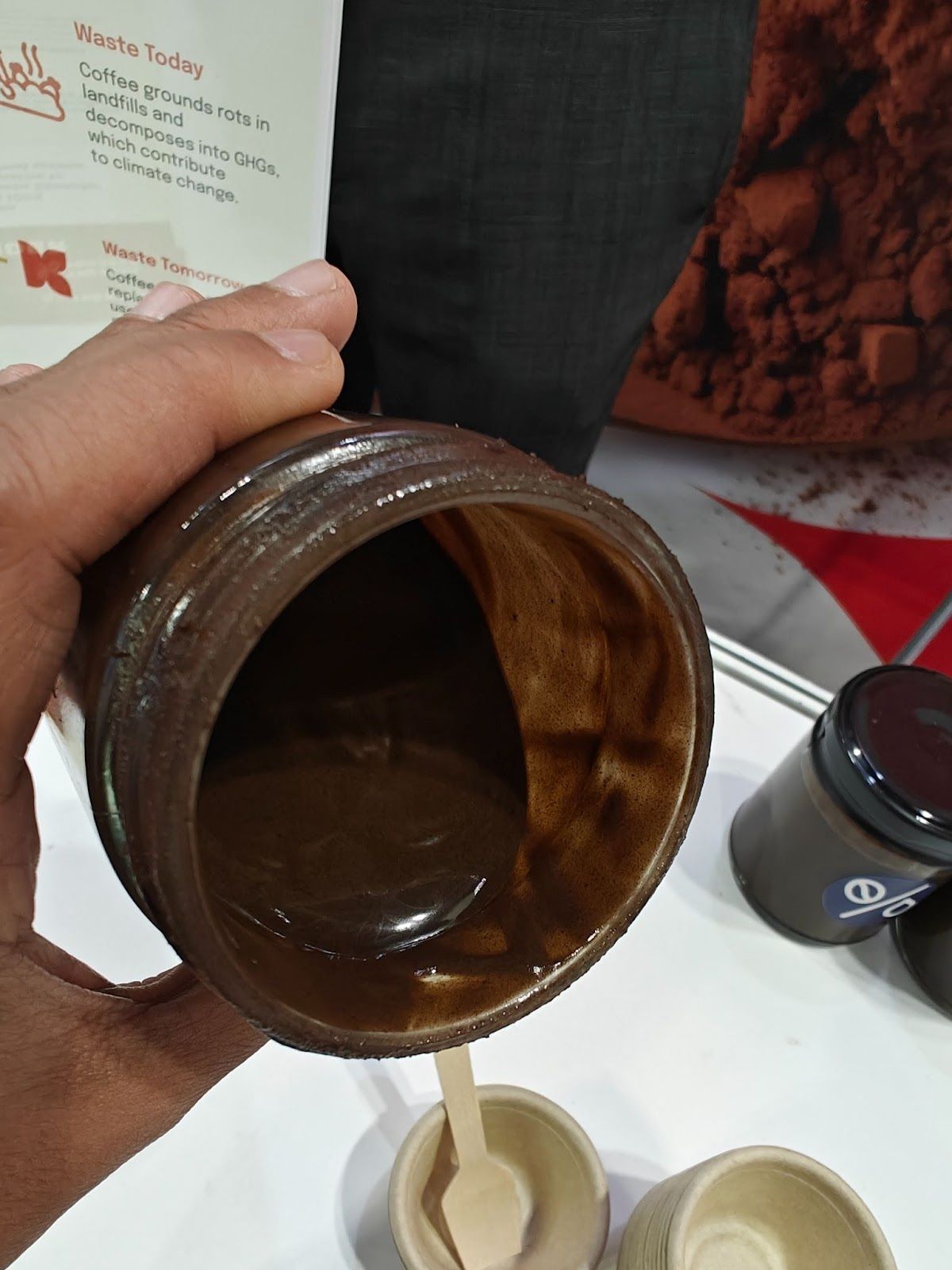
To understand why this is important, just take a look at the carbon footprint of chocolate and coffee in the image below. These are not exactly the most eco-friendly of foods, despite being plant-based (I really wish I could un-know this fact).
As cocoa-growing regions feel the impact of a changing climate, the strain on supply is going to significantly affect everyone. Developing such alternatives could mitigate some of this pressure.

Source: Visual Capitalist
Animal nutrition company Nutricell from Indonesia is working on creating protein alternatives from palm kernels and rubber seeds. Indonesia is the largest producer of palm oil in the world, and palm oil kernels are a byproduct of this industry. The country is also the second largest producer of rubber and rubber seeds are a byproduct here. In both cases, the residual byproducts are high in protein and various other nutrients but are often just discarded.
Nutricell is working on extracting the proteins from these byproducts and creating edible protein alternatives for both animal and human consumption. At present, the company already offers the product as animal feed for farm animals.
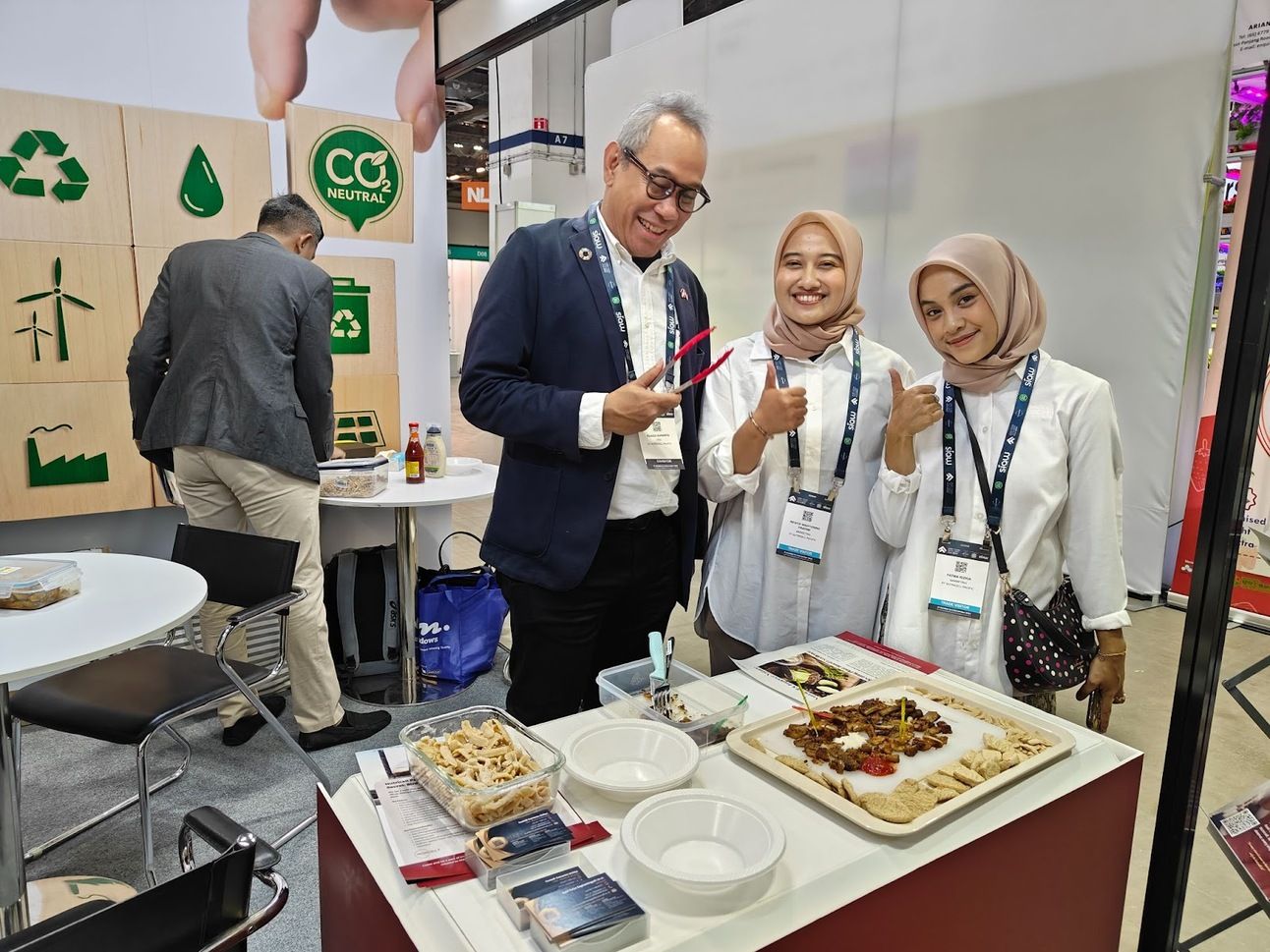
Nutricell from Indonesia
Singapore-based Alterpacks rescues brewer’s spent grain like malt and barley and uses it to make 100% organic packaging. The company says that spent grain accounts for 10% of food waste generated annually and it uses this as an alternative to plastic packaging.

Read more about incorporating upcycling into the product manufacturing process from GourmetPro’s own expert Jérôme Dupont.
Sustainable seafood
According to the Food and Agriculture Organization of the United Nations, 90% of the world’s marine fish stock has been fully used, overused, or completely depleted. There is a serious concern over the lack of availability of fish, not just from the perspective of food but also in terms of impacting the livelihoods of millions of people, particularly in developing countries. One solution to this has been the growth of inland fish farms, and there were actually quite a few companies at AFTEA that make specialized equipment and feed for aquafarms.
Startups like UK-based Noola Redclaw promote sustainable cultivation of crayfish without depleting existing stock while also providing employment for small family farmers in central Java. The company consolidates its harvest in Jakarta and preps it for delivery within central Jakarta and to Singapore. At present, the product is used in foodservice, but the company has plans to expand to retail next year.
Noola Redclaw’s sustainability angle comes from focusing on the small farmers who cultivate the crawfish. The company is working with the Aquaculture Stewardship Council to deliver a framework suitable for small farmers which will allow it to claim strong support of three of the UN’s Sustainable Development Goals – Clean Water, Peace & Justice, and Global Partnership for the Goals.
We’ve seen a lot of plant-based options for meat, but this option is still relatively nascent for seafood alternatives, even though there is clearly greater urgency to address the issue. Tasty as Fish is a Singapore-based startup that offers a plant-based tuna made with chickpea, pea, and rice proteins. This vegan-friendly product is said to be high in protein and omega 3 and free from gluten and soy.
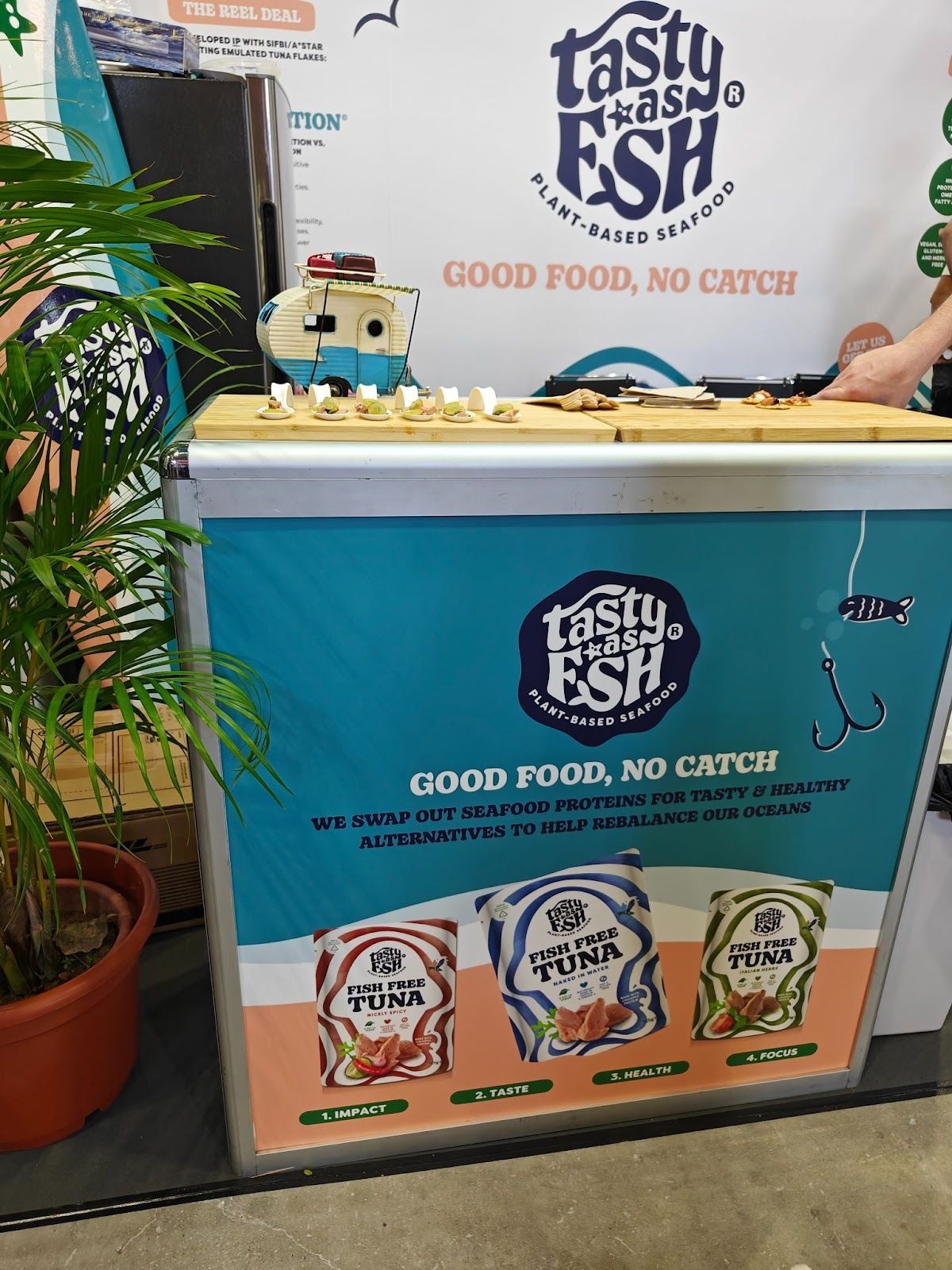
Animal welfare
Animal welfare is also seen as an important part of sustainability. At this point, it isn’t feasible for everyone to give up all animal products and shift to plant-based alternatives. Cultivated meat still has some way to go before it is widely available and affordable for most.
But alternatives to milk have been thriving for a few years now, to the point where they are making traditional milk a little nervous. The Plant Based Food Association estimates that 15% of all milk sold in the US is now plant-based and the category was valued at US$2.8 billion in 2022.

Source: Plant Based Food Association
Despite the popularity of plant-based milk, there is still a strong demand for the original product. And thanks to precision fermentation, we can now enjoy animal milk without harming the animal in question. Thai company Muu uses microbes to produce milk proteins in large vats, which are then purified and made into different dairy products. These are said to have the same taste and texture of the products we are used to, but can be made by taking the cows out of the equation. There are a number of players globally using this method to produce animal-free milk.
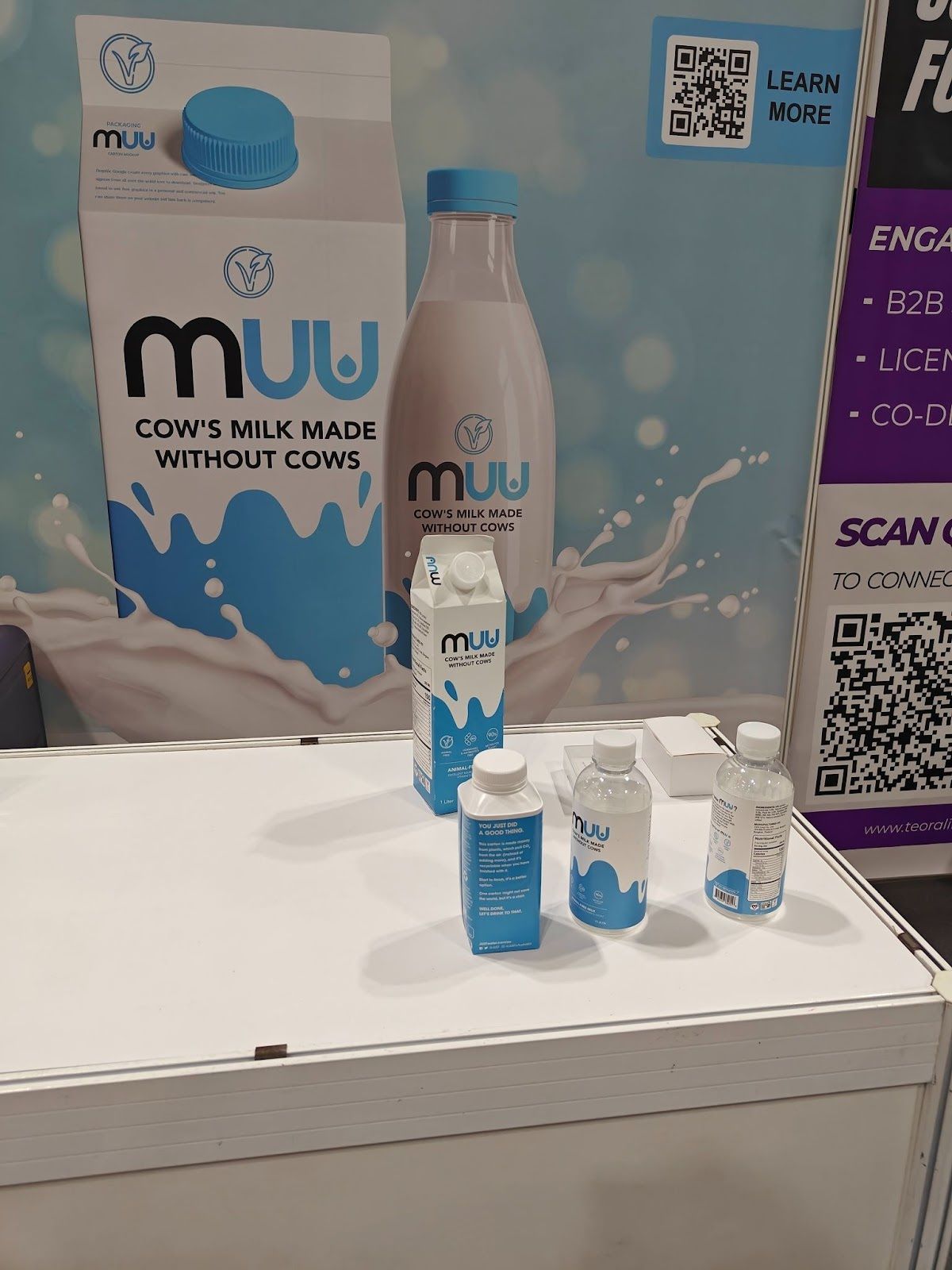
And with that, we come to the end of our highlights from AFTEA. I can’t wait to see what new wonders we’ll find next year!
That’s all, folks!
Thanks for reading today’s newsletter. We’ll be back to our focus on innovation next week with a look at the world of food trend tours.
About Us: GourmetPro is a global network of elite food and beverage industry talents. We provide fractional hiring solutions, allowing international managing directors to scale and transform their local resources and teams with high flexibility and expertise in more than 30 countries. Explore our services.
Made with ❤️ by GourmetPro - your network of Food & Beverage experts, on demand.
💌 If you have any questions, you can directly answer this email. We read and answer all messages.
💖 And if you think someone you know might be interested in this edition of Market Shake, feel free to simply forward this email or click the button below. 💖


